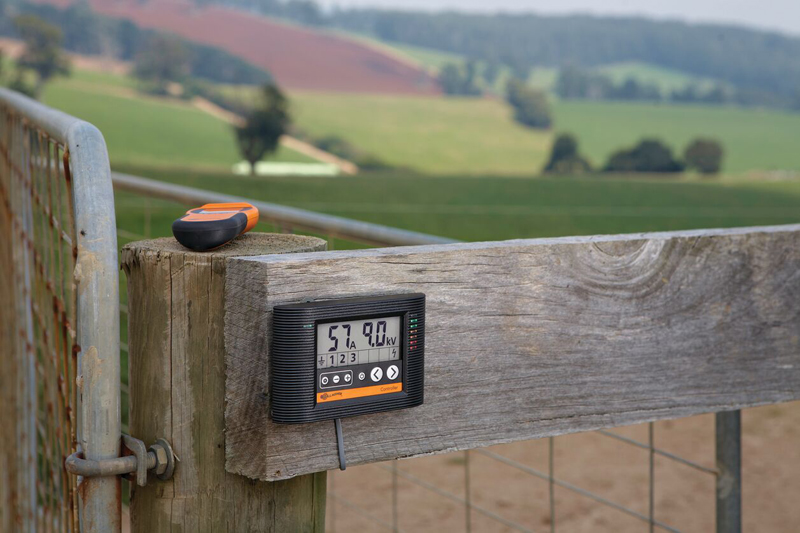15 tips every electric fence DIYer should know
Here are some of our favorite tips from Gallagher Territory Managers and Support Techs that will help you improve your fencing skills
Saturday, 01 January, 2022

Whether you are a beginner or more experienced with electric fencing, here are some of our favorite tips from Gallagher Territory Managers and Support Techs that will help you improve your fencing skills.
Did you know that there are right-handed and left-handed fence staples? Put the staple in your hand with the points aiming away from your body. If the slash/flat area is visible on the right-hand point, then it’s a right-handed staple and should be rotated slightly to the right (clockwise) before driving. If the slash is not visible, it is a left-handed staple and should be rotated to the left. Correct rotation ensures the staple is secure and discourages wood splitting.
Alex Wright - Alex Wright, Territory Manager for New England States
When it comes to grounding your electric fence, as a rule of thumb, use a minimum of 3 ground rods or the Energizer stored Joules rating divided by 5.
Wes Chism - Wes Chism, Territory Manager for Missouri & Southern Illinois
Planning before you begin is key. Sketch out the area you are fencing. Think about water sources in relevance to the fence as well as gates wide enough to gather or move livestock with ease. Check out Gallagher’s Fence Selection tool to help you with this process.
Lee Ellsworth - Lee Ellsworth, Territory Manager for Texas/Arizona/New Mexico
Consider installing a temporary fence for a period of time to see if it works for your needs before installing a permanent one.
Wes Chism - Wes Chism, Territory Manager for Missouri & Southern Illinois
Setting your electric fence far enough from a creek or bank will allow you to pass a brush hog alongside of it to help keep weeds/brush off the hot wire. The same is true for a garden fence. If you allow enough room from your outside rows, you can use a tiller without touching the wire.
Alex Wright - Alex Wright, Territory Manager for New England States
Did you know that high tensile wire comes off a pay-out spinner counter clockwise? This keeps the drag on the payout spinner from tightening up as wire is paid out.
Randy Bailey - Randy Bailey, Territory Manager for California, Nevada, Oregon & SW ID
When installing electric fence, use joint clamps to connect leadout wires and underground cable. Do not wrap the wire onto the fence, as it can arc and will make your fence’s voltage drop simply due to resistance.
Scott Rooney - Scott Rooney, Technical Support Manager, North America
When underwiring a gate on a hot/ground fence – mark the ground or hot insulated underground wire with electrical tape so you don’t connect the underground wire to the wrong fence resulting in a dead fence when you are finished.
Randy Bailey - Randy Bailey, Territory Manager for California, Nevada, Oregon & SW ID
If you take care of your tools, they will return the favor. Hand tools such as pliers, crimping tools, wire cutters and wire strippers should never be laid on the ground. Keeping tools in your hand, tool belt or bucket will not only keep them clean so you can get optimum use out of them, but it will also prevent them from getting lost.
Randy Bailey - Randy Bailey, Territory Manager for California, Nevada, Oregon & SW ID
If you are going to use screw-in ring insulators, make sure you invest in a drill bit. Just put it in a cordless drill, slot in a ring insulator and let the drill screw the insulator into the fence post.
Wes Chism - Wes Chism, Territory Manager for Missouri & Southern Illinois
Gallagher Fence Tester. Own a fence tester and know what your fence typically reads. If your fence shows 5.0kV and you test it one day and have 3.0kV, you know there is an issue. If your fence shows 5.0kV and your neighbor says their fence reads 7.0kV, that doesn’t mean you have a problem with your fence. Both of your fences are effective and there is nothing wrong with a fence reading 5.0kV. In fact, you just need to maintain a minimum level of 3.0kV.
Scott Rooney - Scott Rooney, Technical Support Manager, North America
To break off excess high tensile wire, place a 90° bend in the wire about 6″ beyond the knot. Grasp the wire just beyond the bend and crank it parallel to the fence line (back toward the post or splice). The wire will snap right off. The faster you work, the easier the wire is to break. High tensile wire gets hot when worked slowly. When hot, the wire becomes more difficult to work and break off.
Randy Bailey - Randy Bailey, Territory Manager for California, Nevada, Oregon & SW ID
In line Wire Tighteners are handy for tightening a sagging existing fence. They fit over the fence wire and increases the effectiveness of the strain by pulling from both directions without needing to cut any wire.
Alex Wright - Alex Wright, Territory Manager for New England States
When rewinding long lengths of wire, the extra cost of the geared reel over a standard reel is a worthwhile, time-saving investment. Gallagher Geared Reels have a 3:1 ratio, which means for each turn of the handle, the bobbin spins 3 times, enabling you to collect your wire 3 times faster.
Alex Wright - Alex Wright, Territory Manager for New England States
Check for tax credits. Cost-share opportunities through government programs may be an option. Consult with your Natural Resources and Conservation Service (NRCS) agent before beginning any major fence project. https://www.nrcs.usda.gov/
Wes Chism - Wes Chism, Territory Manager for Missouri & Southern Illinois